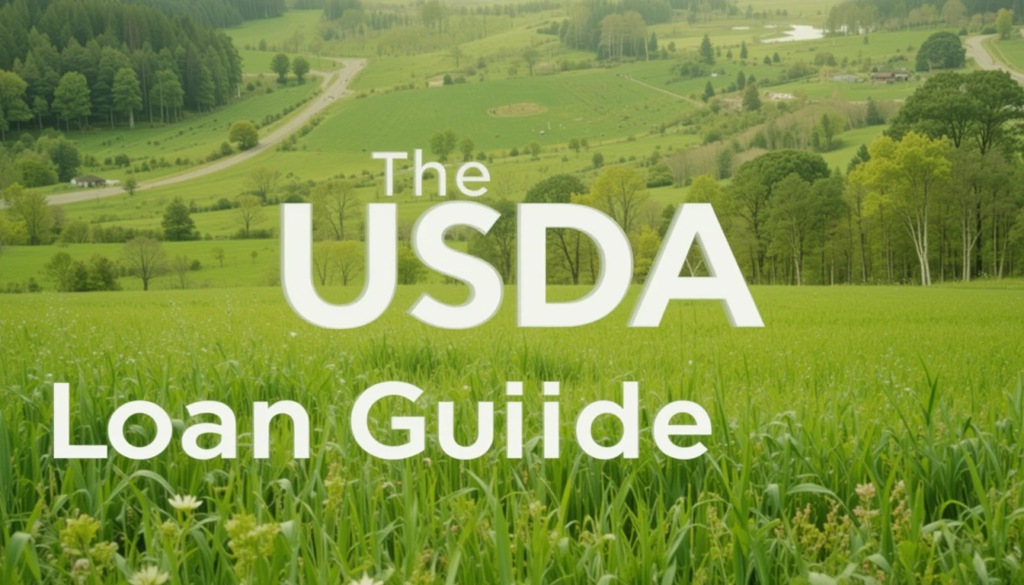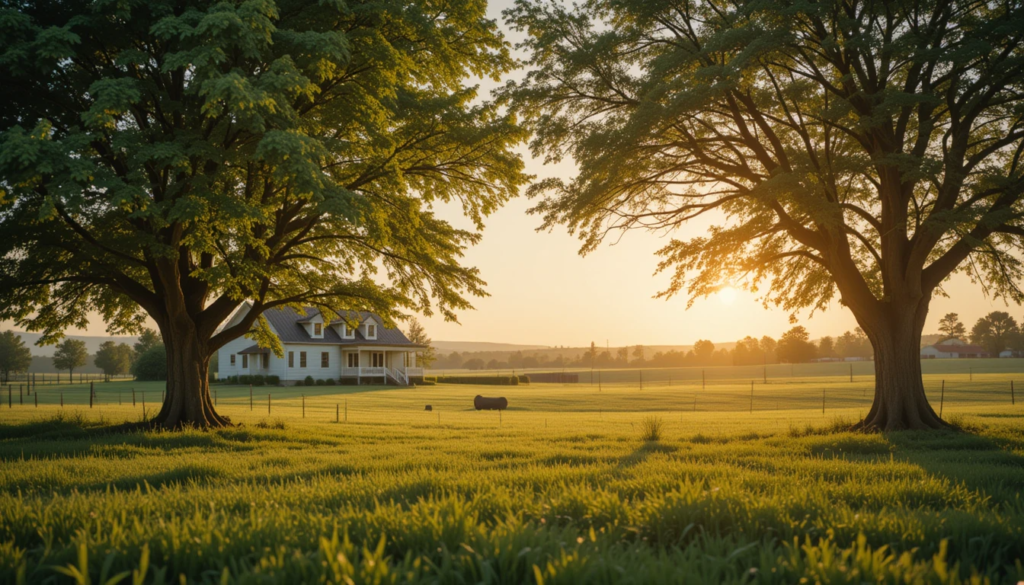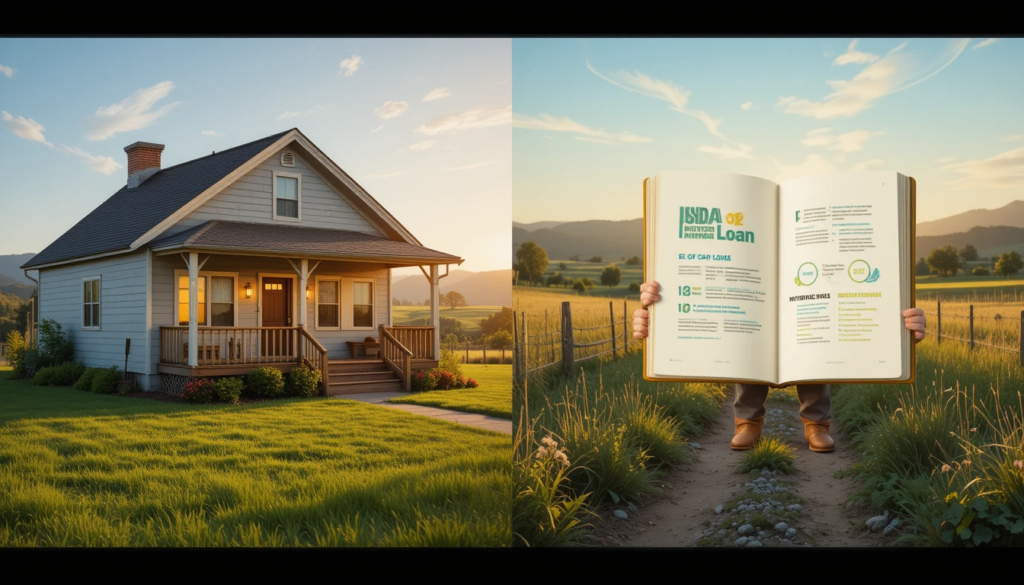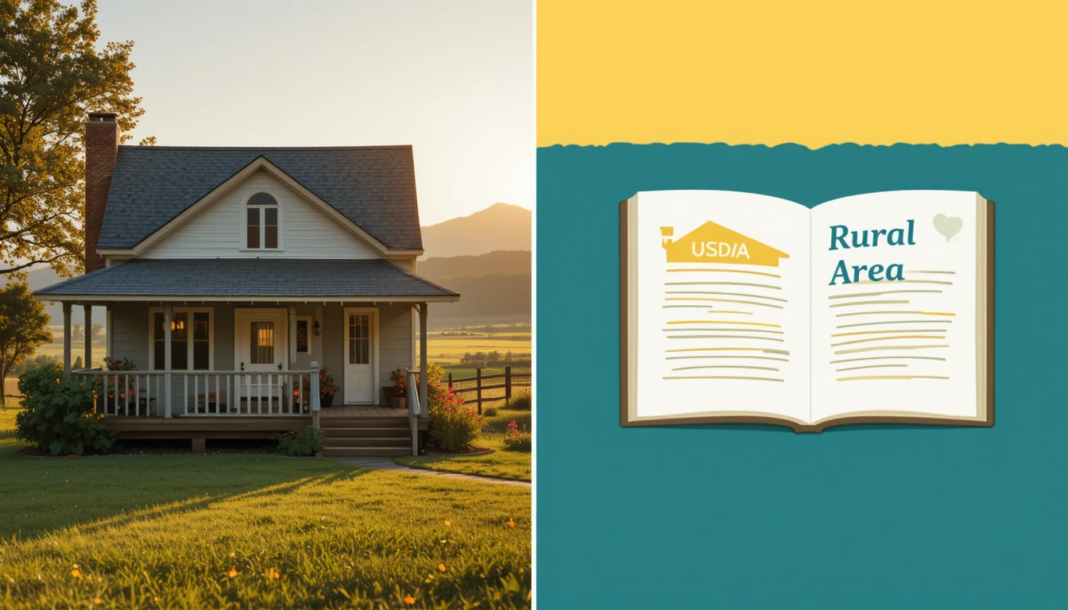Qualify for a USDA loan in your specific state in 2025? This comprehensive guide will break down the eligibility requirements, walk you through the application process, and provide you with the essential knowledge to determine if this fantastic program is right for you. Understanding how to qualify for a USDA loan is the first step towards achieving your dream of owning a home in a qualifying rural area.
Understanding USDA Loans and Eligibility
USDA loans, officially known as the USDA Rural Development Single Family Housing Guaranteed Loan Program, are designed to help low- and moderate-income individuals and families purchase homes in eligible rural areas. The primary goal is to make homeownership accessible in these communities. But how to qualify for a USDA loan involves meeting several key criteria.

Key Eligibility Requirements to Qualify for a USDA Loan:
- Eligible Rural Area: The property must be located in a USDA-defined eligible rural area. Eligibility maps are available on the USDA website.
- Income Limits: Your household income must meet specific income limits, which vary by state and county. These limits are generally set at or below the median income for the area.
- Creditworthiness: While there’s no strict minimum credit score, lenders typically look for a credit score of 620 or higher. However, borrowers with lower scores may still be eligible with compensating factors.
- Repayment Ability: You must demonstrate the ability to repay the loan, including principal, interest, taxes, and insurance (PITI), without exceeding certain debt-to-income ratios.
- U.S. Citizenship or Eligible Non-Citizen Status: Borrowers must be U.S. citizens, non-citizen nationals, or qualified alien residents.
- Owner-Occupancy: The home must be your primary residence.
- No Other Decent, Safe, and Sanitary Housing: You generally cannot already own a decent, safe, and sanitary dwelling in the same commuting area.
Example: Let’s say you’ve found a lovely home in a USDA-eligible area just outside of your city. To understand how to qualify for a USDA loan for this property, you’ll need to check the specific income limits for that county in your state and ensure your family’s income falls within those limits. You’ll also want to review your credit report to understand your creditworthiness.

Step-by-Step Guide on USDA Loan
Understanding how to qualify for a USDA loan is one thing; navigating the application process is another. Here’s a step-by-step guide:
- Check Property Eligibility: Use the USDA’s online mapping tool. Verify that the property you’re interested in is located in an eligible rural area in your state.
- Assess Your Income Eligibility: Review the USDA income limits for your specific county and state. ([Link to USDA Rural Development Income Limits]). Ensure your household income meets these requirements.
- Evaluate Your Credit: Obtain a copy of your credit report and review it for any errors. Work to improve your credit score if necessary.
- Find a USDA-Approved Lender: Not all lenders offer USDA loans. Look for lenders in your state that are approved to participate in the USDA program. You can often find a list on the USDA website or by searching online for “USDA lenders in [Your State]”.
- Get Pre-Approved: Getting pre-approved for a USDA loan will give you. An idea of how much you can borrow and strengthen your offer when you find a home.
- Work with Your Lender: Your lender will guide you through the application process,
- . which involves providing documentation such as income verification, tax returns, and asset statements.
- Home Appraisal: The property will need to undergo an appraisal to ensure it meets USDA guidelines for safety and soundness.
- Loan Underwriting: The lender will review all your documentation and the appraisal to make a final loan decision.
- Closing: If your loan is approved, you’ll proceed to closing. Where you’ll sign the final paperwork and receive the keys to your new home.
Key Factors That Help You
While the basic eligibility requirements are crucial, certain factors can strengthen your application and increase your chances of learning how to qualify for a USDA loan successfully:
- Stable Employment History: Demonstrating a consistent and reliable employment history shows lenders your ability to repay the loan.
- Low Debt-to-Income Ratio (DTI): A lower DTI indicates that you have more income available to cover your housing costs.
- Compensating Factors: Even with a slightly lower credit score, factors like a larger down payment (though not always required), a stable housing history, or significant cash reserves can help offset the risk.
- Understanding State-Specific Requirements: While the core USDA guidelines are federal, there might be slight variations or additional programs at the state level. Researching resources specific to how to qualify for a USDA loan in your state can be beneficial. ([Link to your state’s USDA Rural Development office website, if available])

Common Misconceptions About How to Qualify for a USDA Loan
There are a few common misunderstandings about how to qualify for a USDA loan. Let’s clear some of them up:
- Myth: You need to be a farmer. Fact: While the program focuses on rural areas, you don’t need to work in agriculture to qualify.
- Myth: You need a large down payment. Fact: USDA loans often feature no down payment options for eligible borrowers.
- Myth: Only very low-income individuals qualify. Fact: The program is designed for low- to moderate-income individuals, and the income limits vary by location.
Understanding the realities of how to qualify for a USDA loan can make homeownership a tangible goal for many.
Final Thoughts
Navigating the process of how to qualify for a USDA loan in your state in 2025 might seem complex initially, but by understanding the eligibility requirements and following the steps outlined above, you can determine if this program is the right fit for your homeownership aspirations. Remember to utilize the resources provided by the USDA and connect with experienced USDA-approved lenders in your state to guide you through the journey. Your dream of owning a home in a rural community could be closer than you think!





